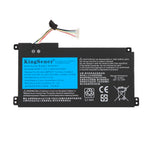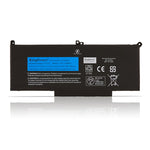Il n'y a aucun objet dans votre panier.
The connection composition of the battery pack

Regardless of the production process, usage type, or battery capacity of lead-acid batteries, the rated voltage of a single battery is usually 2V. Therefore, the battery pack's rated voltage ( 24V, 48V, etc.) must be composed of multiple single batteries in series.
The battery's capacity is determined according to the use requirements of the electrical equipment, ranging from a few ampere hours to thousands or tens of thousands of ampere hours. However, due to various reasons such as production, transportation, handling, installation, and connection, it is impossible to make the battery very large. This requires solving the required rated capacity and working voltage from the connection combination of single batteries.
Connect in series (increase voltage)
The series connection method of the battery pack is to connect the positive (+) and negative (-) electrodes of multiple batteries in sequence, with the first and last ends as the total output. In this connection method, the total voltage = single cell voltage × number of batteries, and the total capacity = single cell capacity (remains unchanged). For example, after 4 12V 100Ah batteries are connected in series, the total voltage is 12V × 4 = 48V, and the total capacity is still 100Ah (the same as a single cell)
This is the most common connection method. Once the required battery capacity and battery pack voltage are determined, when the capacity is below 1000Ah, the single cells are generally connected in series to form a battery pack. This method is more intuitive and convenient for installing, connecting, maintaining, and repairing the battery pack. The actual capacity of the battery pack can be determined by finding the lowest single cell capacity in the battery pack.
Series connection is suitable for devices that require higher voltage, such as electric vehicles, solar systems, and industrial equipment. However, it should be noted that all series-connected batteries should be of the same model, capacity, and age to avoid overcharging or over-discharging due to uneven power. In addition, a charger with matching voltage (such as a 48V charger) should be used when charging to ensure safety and battery life.
Parallel connection (increase capacity)
The parallel connection method of the battery pack is to connect the positive and negative poles of all batteries, and the total output is drawn from both ends of the parallel group. In this connection method, the total voltage = single cell voltage (remains unchanged), and the total capacity = single cell capacity × number of batteries. For example, after 4 12V 100Ah batteries are connected in parallel, the total voltage is still 12V, but the total capacity is increased to 100Ah × 4 = 400Ah.
This method has nothing to do with the working voltage but only expands the capacity. Generally, two independent battery packs consisting of single cells connected in series are used in parallel. In this way, the two groups of batteries can be maintained and repaired separately, and after the battery packs are operated in parallel, the discharge current of a single group is reduced. Therefore, the actual discharge capacity of the two parallel groups of batteries will be greater than the sum of the rated capacities of each group under the same termination voltage.
Parallel connection is suitable for devices that require larger capacity and longer battery life, such as RV energy storage systems, UPS power supplies, etc. However, special attention should be paid to the fact that the voltages of the parallel batteries must be strictly consistent (the difference is preferably ≤0.1V), otherwise the voltage difference may cause current backflow and damage the battery. To ensure safe and stable operation, it is recommended to use a battery balancer or add diodes for isolation to prevent circulation problems between batteries.
Hybrid (series-parallel, taking both voltage and capacity into consideration)
The hybrid (series-parallel) connection method of the battery pack is to achieve the simultaneous optimization of voltage and capacity by first connecting in series to increase the voltage and then connecting in parallel to increase the capacity (or reverse operation). In this connection method, the total voltage is equal to the voltage of a single series group, and the total capacity is equal to the capacity of a single parallel group multiplied by the number of parallel groups.
Take 8 12V 100Ah batteries connected in 2 series and 4 parallel as an example: first connect 2 batteries in series to form a group (12V×2=24V, the capacity remains 100Ah), and then connect 4 groups of such series batteries in parallel, and the final system output is 24V 400Ah (100Ah×4).
This hybrid method is particularly suitable for occasions that need to meet both high voltage and large capacity requirements, such as large energy storage power stations, electric ships, and other industrial applications. In actual operation, the consistency of battery parameters must be strictly controlled, requiring the performance parameters of each group of series batteries to be highly matched, and the voltage difference between parallel groups must not exceed 0.2V.
For complex hybrid systems, it is strongly recommended to configure a professional battery management system (BMS) to achieve real-time monitoring, balancing management, and safety protection to ensure stable and efficient operation of the system.

Note the following key points.
When mixing batteries (i.e., combining series and parallel), special attention should be paid to the following key issues to ensure the safety and stability of the system:
Battery consistency
All batteries should use the same model, same capacity, and consistent age of battery packs, and ensure that the voltage difference between each battery does not exceed 0.1V. If the battery performance is inconsistent, the battery with higher power may reverse charge the battery with lower power, causing battery overheating or even damage, seriously affecting the life and safety of the system.
Wire and connector selection
To reduce line impedance, it is recommended to use low-impedance copper cables with sufficient cross-sectional area (for example, 25mm² wire can support 100A current). In addition, the connection terminals should be tinned or silver-plated to prevent lead-acid corrosion and ensure a long-term stable electrical connection.
Safety protection measures
In each series circuit, a fuse of appropriate specifications (such as 1.25 times the rated current) should be installed to prevent overcurrent damage. If parallel connection is used, it is recommended to use diode isolation or a battery balancer to avoid circulating current between batteries, thereby reducing energy loss and overheating risks.
Charging management
The charger must match the total voltage of the hybrid system (for example, a 24V charger is suitable for a 24V battery pack). If conditions permit, an independent charging port can be configured for each group of series batteries to ensure balanced charging and extend battery life.
Following the above precautions can effectively improve the reliability and safety of the hybrid battery system and avoid potential risks.
If this article still doesn't help your laptop battery, you can buy a new battery at BatteryMall.com
If you want to learn more about batteries, please visit: BatteryMall.com/blogs/suppor








